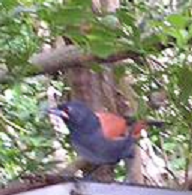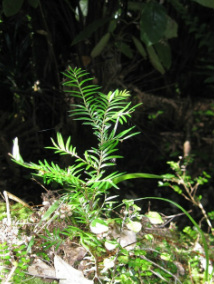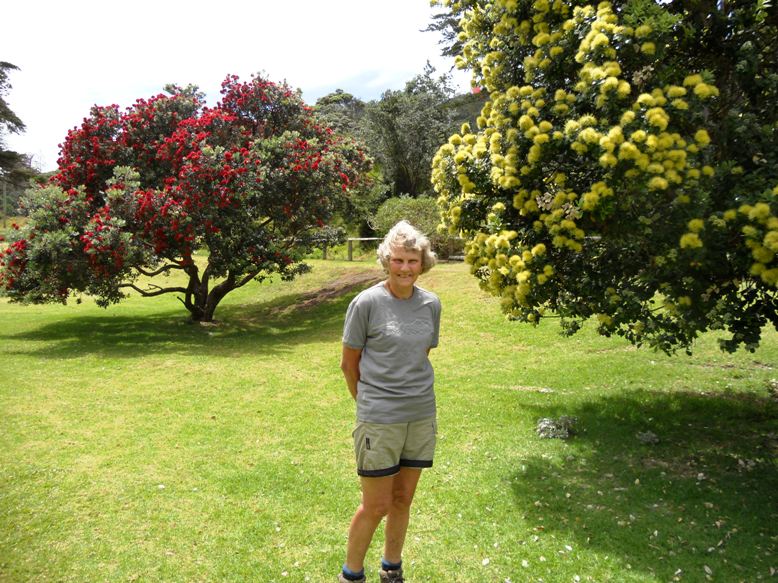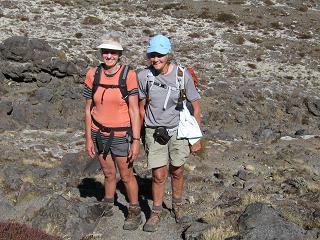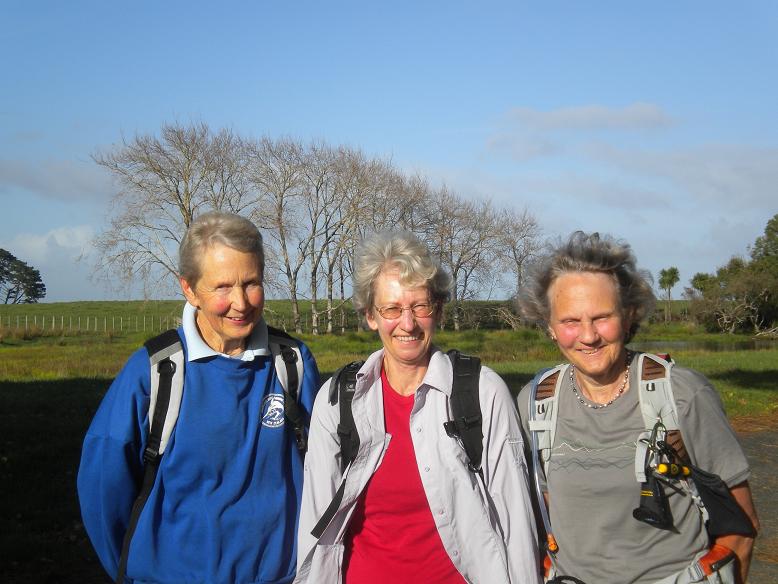On this page
> Group walking cuts risk of life-threatening conditions
> Kiwi numbers increase on Kaipara Harbour nature reserve at Glorit
> Kauri Dieback
> Saddlebacks are back on Rangitoto
> Miro and Matai are regenerating in the North Waitakeres
> Parnell Discussion Group talk about mangroves
> Tribute to Kathryn
> Threat to native birdlife from red vented bulbuls
> Saddlebacks are back on Rangitoto
> Miro and Matai are regenerating in the North Waitakeres
> Parnell Discussion Group talk about mangroves
> Tribute to Kathryn
> Threat to native birdlife from red vented bulbuls
Group walking cuts risk of life-threatening conditions Date:January 20, 2015. Source:University of East Anglia Summary: Risk of stroke, coronary heart disease, depression and other life-threatening conditions can be reduced through regular outdoor walking in groups, according to research. Findings reveal that people who regularly walk in groups have lower blood pressure, resting heart rate and total cholesterol.
http://www.sciencedaily.com/releases/2015/01/150120090240.htm?utm_source=feedburner
Kiwi numbers increase - 14/04/2014
A GOOD NEWS STORY - In October last year the club visited Mataia Homestead and the private nature reserve at Glorit on the Kaipara Homestead. At the time a number of kiwi had been relocated to the predator proofed property and were breeding successfully.
Several more kiwi have just been transferred and with a successful breeding season, there are now 25 kiwi in the reserve! www.kiwisforkiwi.org
Kauri Dieback - Phytophthora taxon Agathis (PTA)
Kauri, like others of the Araucaria family are only found in a few select locations in the world and are confined to the Southern Hemisphere. They can live for up to 2000 years. Our largest kauri, Tane Mahuta, in the Waipoua Forest, is thought to be between 1200 and 2000 years old. Kauri dieback disease can kill mature trees in five years, seedlings die in a few weeks.
So we must all do whatever we can to stop the spread this dreadful organism. What can we do, you ask?
The Department of Conservation has a number of recommendations that will help. When walking in areas where kauri trees are growing:
A. Brush soil off your boots and walking poles, then spray them and any other equipment that may have come into contact with the soil, even briefly, eg. backpacks, with the trigene solution provided at spray stations.
B. Do this at every spray station you encounter; you could have picked up infected soil along the way.
C. Keep to the tracks!
D. If you take a dog into bush areas, keep them on the tracks and don't let them wander off into the bush.
E. When you get home from a tramp, wash all equipment that may have come into contact with soil, ensuring the waste does not empty into a storm water drain.
F. Encourage others on walking tracks to use the spray stations.
Saddlebacks on Rangitoto!On our ANHC trip to Rangitoto in August we saw a number of saddlebacks, both on the recce we did a week before the trip and on the trip itself! Good to
know that the intensive pest exclusion / eradication programmes undertaken by DoC have resulted in these very distinctive and attractive birds finding another island haven. |
Regenerating miro and matai in the North
|
Also thanks to successful pest control, you can now find both young miro (Prumnopitys ferruginea) and young matai (Prumnopitys taxifolia) even on some of the more accessible tracks in the North Waitakeres. This is exciting news for us "Westies!" Fewer pests means more birds available to eat the berries of these natives and spread the undigested, viable seeds around in the bush: kereru are particularly fond of such berries. (Left: a young miro in the "Ark in the Park", Waitakeres) |
Sunday Discussion Group - August 2013
At our last meeting we talked about Mangroves. A mangrove is not a single type of tree as we often think, but
a habitat proximal to the sea but can also extend up an estuary. They are mostly found in equatorial regions all over the world, with different species dominating in different geographical locations. More about mangroves.....
a habitat proximal to the sea but can also extend up an estuary. They are mostly found in equatorial regions all over the world, with different species dominating in different geographical locations. More about mangroves.....
Kathryn
We were all very sad when one of our most valued members, Kathryn, passed away in July; she was so full of fun, with so much energy and generous with her help to everyone on our trips. Kathryn's knowledge of the tracks all over New Zealand will be greatly missed in the Club. She led many walks, helped with reccies and was always ready to go and explore a new area or a new track that we had not tried before.
We look forward to two of Kathryn's sisters, also keen trampers, joining us for our next weekend trip to Port Waikato.
We look forward to two of Kathryn's sisters, also keen trampers, joining us for our next weekend trip to Port Waikato.
Message from Derek, President of the Auckland Natural History Club, on Kathryn's passing:
"You will be sad to know that longtime member Kathryn Tarrant died suddenly at home on 16th July 2013.
An outdoor girl, Kathryn had an extensive knowledge of tracks and walks throughout New Zealand. She had a large input into our programmes, led many of our walks and was always there to support new leaders.
She was an enthusiastic member of the committee for many years, treasurer for a while and will be sadly missed as a friend and mentor - a great loss to the club."
~~~~~~~~~~~~~~~~~~~~~~~~~~~~~~~~~~~~~~~~~~~~~~~~~~~~~~~~~~~
An outdoor girl, Kathryn had an extensive knowledge of tracks and walks throughout New Zealand. She had a large input into our programmes, led many of our walks and was always there to support new leaders.
She was an enthusiastic member of the committee for many years, treasurer for a while and will be sadly missed as a friend and mentor - a great loss to the club."
~~~~~~~~~~~~~~~~~~~~~~~~~~~~~~~~~~~~~~~~~~~~~~~~~~~~~~~~~~~
A foreign invader - the red vented bulbul
For information about the red-vented bulbul which has been sighted in Auckland,
go to http://www.biosecurity.govt.nz/pests/red-vented-bulbul . You can see what it looks like and listen to its
call, or download a factsheet. Report any sightings to the Ministry for Primary Industries hotline 0800 80 99 66.
UPDATE:
18.08.2013 - from the Department of Conservation Auckland Area Office in conjunction with Auckland Council and Ministry of Primary Industries:
There have been confirmed reports in several parts of Auckland - Mangere, Manurewa, Alfriston, Henderson, Massey, Te Atatu, Belmont, Takapuna and the Whangaparoa Peninsula. In addition, they were reported in the Waitakeres in June.
go to http://www.biosecurity.govt.nz/pests/red-vented-bulbul . You can see what it looks like and listen to its
call, or download a factsheet. Report any sightings to the Ministry for Primary Industries hotline 0800 80 99 66.
UPDATE:
18.08.2013 - from the Department of Conservation Auckland Area Office in conjunction with Auckland Council and Ministry of Primary Industries:
There have been confirmed reports in several parts of Auckland - Mangere, Manurewa, Alfriston, Henderson, Massey, Te Atatu, Belmont, Takapuna and the Whangaparoa Peninsula. In addition, they were reported in the Waitakeres in June.
